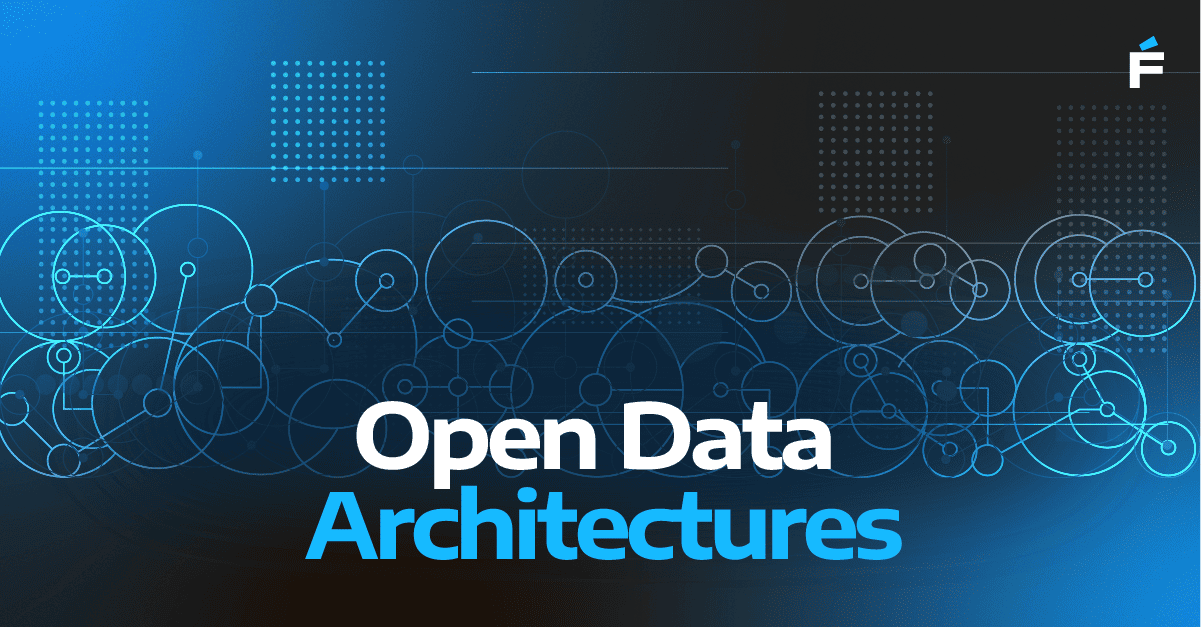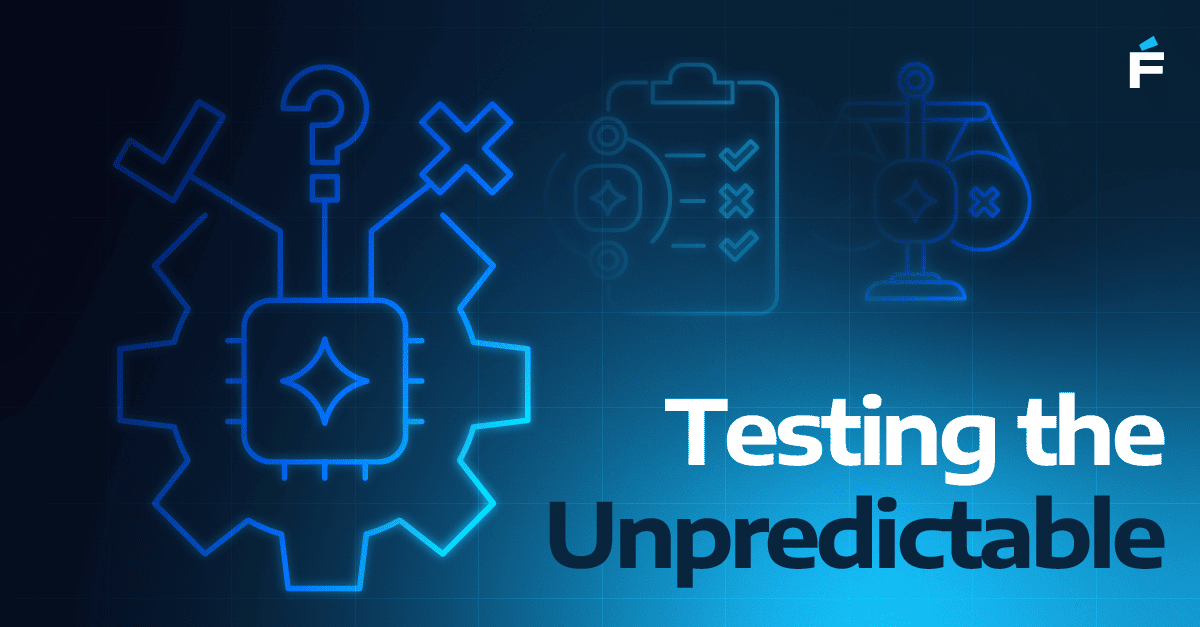AI has already reshaped how we build and validate software, testing included.
Agentic testing is no longer theoretical; it’s actively influencing workflows across engineering teams. The strategic conversation has shifted from feasibility to impact: where these tools create real leverage, how they complement human judgment, and what it takes to integrate them meaningfully into the software lifecycle.
At Forte Group, we’re actively applying AI to augment testing strategies, not just experimenting with tools, but integrating intelligent capabilities that elevate outcomes across the software lifecycle. Rather than chasing trends, we're focused on embedding AI where it delivers the most value supporting testers, improving coverage, and enabling smarter decision-making. Recently, we took a deep look at one of the more talked-about options: Testers.ai, a no-code AI assistant for automated exploratory testing.
What is Agentic Testing and How Does it Work?
Agentic testing involves using AI agents that autonomously explore, evaluate, and report on software applications, emulating the intuition and adaptability of human testers. Unlike traditional automation, these agents don’t follow rigid, predefined scripts. Instead, they interact with the UI, identify unexpected behaviors, and generate meaningful insights in real time.
The goal isn’t to replace human testers, but to amplify their impact—particularly in exploratory testing, where AI can handle the repetitive, detail-oriented work that often drains time and focus. Agentic testing complements manual testing by uncovering patterns, anomalies, and edge cases that may be overlooked in traditional sessions. This allows human testers to concentrate on where they add the most value: applying domain expertise, critical thinking, and product insight to guide meaningful quality improvements. It's about accelerating feedback loops and reducing reliance on scripted coverage, without losing the nuance that only experienced testers can provide.
Getting Started with Testers.ai
One way to experience agentic testing in practice is through platforms like Testers.ai, which makes the process highly accessible:
- No code required
- Download the CLI tool
- Point it at a URL
- Run it from the command line
From there, a team of AI-driven testers, each with a distinct exploratory “persona”, conducts a comprehensive session, performing over 700 validations. The resulting report includes:
- A summary score (A–F) to provide a high-level, objective view of application quality, which is especially useful in exploratory contexts where evaluation is often subjective
- Detailed findings across accessibility, performance, security, and UI behavior
- A full video replay of the test session
- JSON output that captures step-by-step test execution, ideal for in-depth inspection and generating custom reports
Think of it as Google Lighthouse meets exploratory QA: not just focused on static metrics, but dynamically engaging with your product to uncover how it behaves in practice.

testers.ai agents performing autonomous testing on the fortegrp.com homepage
Benefits of AI Testing Assistants Like Testers.ai
✅ Fast setup and low barrier to entry
Testers.ai offers a frictionless experience — ideal for teams with limited QA bandwidth.
✅ Exploratory feedback at scale
It highlights overlooked areas like mobile responsiveness, accessibility, and metadata compliance.
✅ Runs offline
With the right setup, you can run the agent fully locally (no data sent externally), which is critical for testing in secure or regulated environments.
✅ Useful for early-stage or low-QA projects
You get fast, directional insights without investing in a full test strategy.
“It’s great for simple applications or non-technical users who need a fast, guided way to validate a UI. You don’t need a whole QA team or automation setup — just point it at your app and get insights right away.”
— Ruslan Kryvosheiev, QA Solutions Architect
Limitations of Agentic Testing Tools
For all the convenience, there are meaningful gaps:
- Limited test depth – Agents don’t execute complex user flows (e.g., login, checkout).
- Static reports – You can’t customize prioritization or reporting format.
- No real-time interaction – There’s no “human-in-the-loop” to course-correct tests during execution.
- Lack of framework integration – You can’t convert output into reusable test assets.
- No native API access or plug-ins – Integration with tools like JIRA or CI/CD pipelines is missing.
Bottom line: it's not ready to anchor your test automation strategy — but it can absolutely augment it.
“Testers.ai is fast and easy to run — no doubt about it. But it doesn’t go deep. It’s not going to walk through a checkout flow or test business logic. It gives you a surface-level scan, which is valuable, but it’s not a replacement for structured automation or a hands-on QA strategy.”
— Ricardo Staudt, Quality Assurance Architect
Where Testers.ai Fits in a QA Strategy
Agentic tools like Testers.ai aren’t about replacing manual or automated testers. They’re about enhancing what you already do, giving you faster visibility into problem areas, and unlocking feedback loops where you may otherwise have none.
The Future of Agentic Testing
The team behind Testers.ai is working on a new interface called CoTestPilot, which aims to let you interact with AI testers in real time, assigning tasks, integrating context from JIRA, and guiding agentic workflows dynamically. If successful, it could signal the next phase in AI-driven QA orchestration.
But the bigger picture? This is just the beginning. Whether it's Testers.ai or something that comes next, agentic testing is now part of the software QA toolkit, and the focus is shifting toward improving how we guide, interpret, and scale these assistants alongside human testers.
Final Thoughts: Agentic Testing Is Here to Stay
As I often say, automation is about removing repetitive work so teams can focus on what matters most. Agentic testing assistants take that idea a step further — helping teams move faster, think broader, and catch things they’d otherwise miss.
But like any tool, success comes down to how thoughtfully you apply it.
“Agentic testing assistants give you more information, faster. But they don’t tell you what matters. That still requires human judgment, domain knowledge, and context.”
— Lee Barnes, Chief Quality Officer, Forte Group
Ready to Explore AI-Enabled Testing?
At Forte Group, we help companies evaluate and integrate AI tools into their quality strategy — with the right guardrails and goals in mind.
👉 Let’s talk about how agentic testing can fit into your delivery process.

.png)


